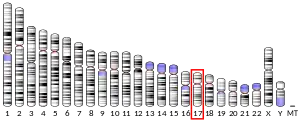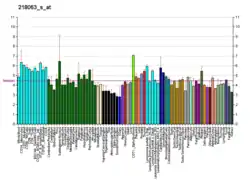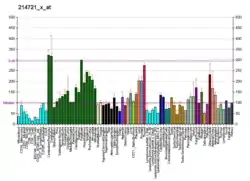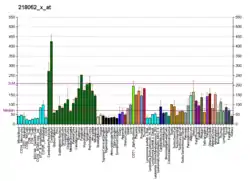| CDC42EP4 | |||||||||||||||||||||||||||||||||||||||||||||||||||
|---|---|---|---|---|---|---|---|---|---|---|---|---|---|---|---|---|---|---|---|---|---|---|---|---|---|---|---|---|---|---|---|---|---|---|---|---|---|---|---|---|---|---|---|---|---|---|---|---|---|---|---|
| Identifiers | |||||||||||||||||||||||||||||||||||||||||||||||||||
| Aliases | CDC42EP4, BORG4, CEP4, KAIA1777, CDC42 effector protein 4 | ||||||||||||||||||||||||||||||||||||||||||||||||||
| External IDs | OMIM: 605468 MGI: 1929760 HomoloGene: 8110 GeneCards: CDC42EP4 | ||||||||||||||||||||||||||||||||||||||||||||||||||
| |||||||||||||||||||||||||||||||||||||||||||||||||||
| |||||||||||||||||||||||||||||||||||||||||||||||||||
| |||||||||||||||||||||||||||||||||||||||||||||||||||
| |||||||||||||||||||||||||||||||||||||||||||||||||||
| |||||||||||||||||||||||||||||||||||||||||||||||||||
| Wikidata | |||||||||||||||||||||||||||||||||||||||||||||||||||
| |||||||||||||||||||||||||||||||||||||||||||||||||||
Cdc42 effector protein 4 is a protein that in humans is encoded by the CDC42EP4 gene.[5][6][7]
The product of this gene is a member of the CDC42-binding protein family. Members of this family interact with Rho family GTPases and regulate the organization of the actin cytoskeleton. This protein has been shown to bind both CDC42 and TC10 GTPases in a GTP-dependent manner. When overexpressed in fibroblasts, this protein was able to induce pseudopodia formation, which suggested a role in inducing actin filament assembly and cell shape control.[7]
References
- 1 2 3 GRCh38: Ensembl release 89: ENSG00000179604 - Ensembl, May 2017
- 1 2 3 GRCm38: Ensembl release 89: ENSMUSG00000041598 - Ensembl, May 2017
- ↑ "Human PubMed Reference:". National Center for Biotechnology Information, U.S. National Library of Medicine.
- ↑ "Mouse PubMed Reference:". National Center for Biotechnology Information, U.S. National Library of Medicine.
- ↑ Hirsch DS, Pirone DM, Burbelo PD (Mar 2001). "A new family of Cdc42 effector proteins, CEPs, function in fibroblast and epithelial cell shape changes". J Biol Chem. 276 (2): 875–83. doi:10.1074/jbc.M007039200. PMID 11035016.
- ↑ Joberty G, Perlungher RR, Macara IG (Feb 2000). "The Borgs, a new family of Cdc42 and TC10 GTPase-interacting proteins". Mol Cell Biol. 19 (10): 6585–97. doi:10.1128/MCB.19.10.6585. PMC 84628. PMID 10490598.
- 1 2 "Entrez Gene: CDC42EP4 CDC42 effector protein (Rho GTPase binding) 4".
External links
- Human CDC42EP4 genome location and CDC42EP4 gene details page in the UCSC Genome Browser.
Further reading
- Osada N, Kusuda J, Suzuki Y, et al. (2001). "Sequence analysis, gene expression, and chromosomal assignment of mouse Borg4 gene and its human orthologue". J. Hum. Genet. 45 (6): 374–7. doi:10.1007/s100380070012. PMID 11185749.
- Strausberg RL, Feingold EA, Grouse LH, et al. (2003). "Generation and initial analysis of more than 15,000 full-length human and mouse cDNA sequences". Proc. Natl. Acad. Sci. U.S.A. 99 (26): 16899–903. Bibcode:2002PNAS...9916899M. doi:10.1073/pnas.242603899. PMC 139241. PMID 12477932.
- Ota T, Suzuki Y, Nishikawa T, et al. (2004). "Complete sequencing and characterization of 21,243 full-length human cDNAs". Nat. Genet. 36 (1): 40–5. doi:10.1038/ng1285. PMID 14702039.
- Blackshaw S, Harpavat S, Trimarchi J, et al. (2006). "Genomic analysis of mouse retinal development". PLOS Biol. 2 (9): E247. doi:10.1371/journal.pbio.0020247. PMC 439783. PMID 15226823.
- Gerhard DS, Wagner L, Feingold EA, et al. (2004). "The status, quality, and expansion of the NIH full-length cDNA project: the Mammalian Gene Collection (MGC)". Genome Res. 14 (10B): 2121–7. doi:10.1101/gr.2596504. PMC 528928. PMID 15489334.
- Barrios-Rodiles M, Brown KR, Ozdamar B, et al. (2005). "High-throughput mapping of a dynamic signaling network in mammalian cells". Science. 307 (5715): 1621–5. Bibcode:2005Sci...307.1621B. doi:10.1126/science.1105776. PMID 15761153. S2CID 39457788.
- Rual JF, Venkatesan K, Hao T, et al. (2005). "Towards a proteome-scale map of the human protein-protein interaction network". Nature. 437 (7062): 1173–8. Bibcode:2005Natur.437.1173R. doi:10.1038/nature04209. PMID 16189514. S2CID 4427026.
- Olsen JV, Blagoev B, Gnad F, et al. (2006). "Global, in vivo, and site-specific phosphorylation dynamics in signaling networks". Cell. 127 (3): 635–48. doi:10.1016/j.cell.2006.09.026. PMID 17081983. S2CID 7827573.
This article is issued from Wikipedia. The text is licensed under Creative Commons - Attribution - Sharealike. Additional terms may apply for the media files.






